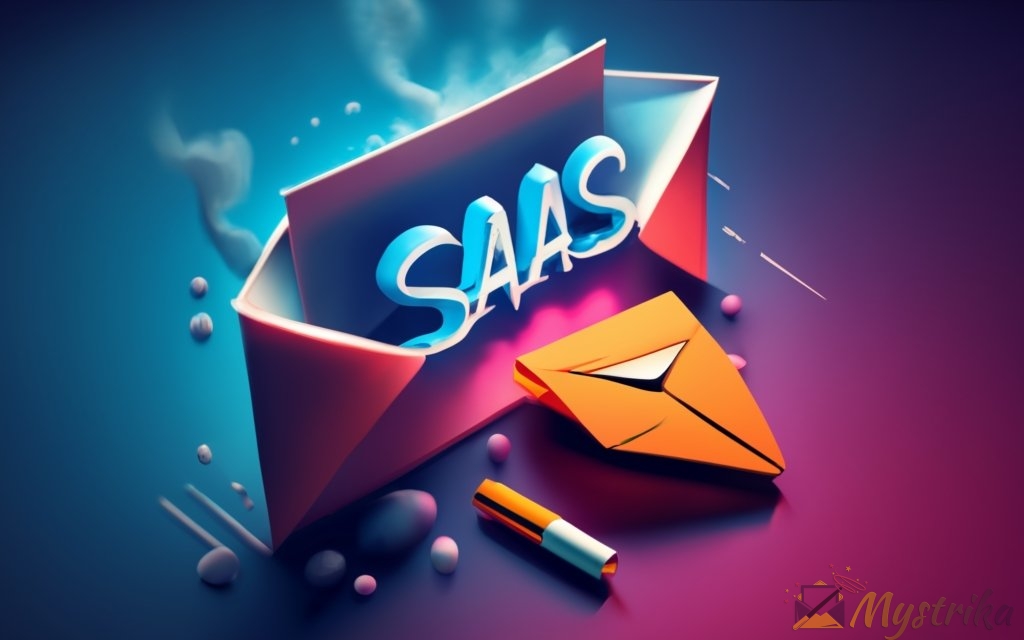For ambitious SaaS companies, dominating niches requires unmatched customer acquisition capabilities. Cold email done right delivers exactly this – allowing you to engage, convert, and delight prospects at scale.
This comprehensive guide equips you with strategies and tactics to build a high-performance outbound machine that accelerates revenue growth and market share capture.
You’ll discover how leading vendors drive results by:
- Leveraging cold email throughout the customer lifecycle
- Writing breakthrough emails with proven templates
- Automating and optimizing campaigns powered by data
- Maintaining deliverability and compliance best practices
Rather than a one-off project, treat this as your blueprint for continuous optimization and cold email excellence. Your competitors will never know what hit them!
Why Cold Emailing is Critical for SaaS Companies
For software companies operating on a subscription revenue model, new customer acquisition is a matter of business survival. In a competitive SaaS landscape with thousands of solutions vying for attention, cutting through the noise to connect with prospects can be a daunting task. While many channels exist today for outbound sales and lead generation efforts, few can match the versatility and ROI potential of cold email outreach.
Generating New Leads and Customers
At its core, cold emailing represents a scalable way for SaaS providers to identify and engage potential new customers that are otherwise unaware of their solutions. Based on statistics, over 80% of sales go to the vendor that reaches prospects first. This first-mover advantage highlights why an effective email outreach strategy is mission-critical.
When incorporated as part of a multi-channel campaign, cold emails enable SaaS sellers to generate net-new sales pipeline and carve out market share. Even at conservative response rates, a sustained cold outreach effort targeted to the right buyer personas could realistically yield hundreds of qualified leads over a 6 to 12 month period. For firms spending aggressively on SDR prospecting teams, the potential opportunity is even greater.
Beyond lead gen, persistent cold email follow-ups have proven uniquely effective at nurturing prospects across the buyer’s journey to close new logos. Email sequences that incorporate value-driven content and social proof can thaw the coldest of leads, especially when messaging is aligned to the prospect’s pain points. This makes email an indispensible component for hitting aggressive new customer acquisition targets.
A Cost-Effective Route to Targeted Outreach
For all its promise in generating pipeline and closing deals, cold emailing is ultimately constrained by budget realities. The good news is that email consistently ranks among the most cost-effective demand generation tactics available.
Based on spend data, it costs SaaS firms around $15 on average to generate an MQL-grade lead via cold email. Contrast this with $157 for sponsored social media ads or upwards of $250 for paid search clicks in competitive niches. The cost to acquire a lead via field sales prospecting or events also far surpasses cold emailing.
Beyond raw costs, cold email enables incredible targeting precision. Senders can segment and personalize messaging based on virtually any attribute, from company size to tech stack used. Try doing that with billboards or radio spots! Combine email’s affordability and reach with the ability to hyper-target ideal prospects and it’s easy to see why the channel can deliver impressive ROI.
For further cost optimization, tools like Mystrika offer unlimited outreach capabilities paired with free warmup services to maximize inbox placement. This translates into more leads without expending additional budget. Compared to conventional ad channels, cold emailing simply gives SaaS firms the most mileage per dollar spent.
Harnessing the Power of Personalized, Scalable Outreach
Even with ideal targeting, no outbound channel can match email’s unique balance of personalization and reach. Cold email software empowers senders to incorporate personalized merge fields into both subject lines and content. This level of customization and relevance simply isn’t possible at scale with other tactics.
Beyond names and companies, advanced enrichment tools can append dozens of data points to each recipient for further message personalization. With the ability to track opens and clicks as well, senders have unparalleled visibility into what messaging resonates best on an individual prospect basis. No other channel comes close in aligning touches to each lead’s preferences.
And yet for all its personalization powers, cold emailing remains inherently scalable in a way phone calls and field sales simply aren’t. Even small SaaS firms can leverage email sequencing to cast a wide net, nurturing thousands of prospects simultaneously. With programmatic follow-up chains, senders can deliver the right message at the right time to every prospect on autopilot.
This combination of personalization and automation is a force multiplier for SaaS sales and success teams seeking to expand their reach. In an increasingly crowded marketplace, the ability to deliver targeted, individualized messaging at scale is what separates thriving vendors from stagnant ones. Leveraged effectively, cold email accomplishes this better than any available alternative.
The Verdict? Bet Big on Cold Email
Given its unique strengths around lead generation, affordability, precision targeting, and customization at scale, cold emailing needs to be a foundational pillar within any growth-oriented SaaS firm’s marketing stack.
Just as CRM platforms evolved to optimize sales processes, purpose-built cold email solutions like Mystrika now level the playing field for outbound success. Adopting a robust email outreach strategy, even as part of a broader field sales effort, represents the lowest hanging fruit for acquisition wins available to sellers today.
In our hyper-competitive software landscape, the question for SaaS firms isn’t whether they should be aggressively email prospecting, but how they can build a world-class outbound program poised to dominate their niche. With so much on the line, the stakes for getting cold email right couldn’t be higher.

Understanding Your Target Audience
They say you can’t sell a product you don’t understand. The same applies to cold emailing – you can’t successfully pitch prospects if you lack insights into their needs. That’s why researching and segmenting your audience is a prerequisite for SaaS sales and marketing teams before launching cold outreach.
Crafting Your Ideal Customer Profile
Any good sales playbook starts by identifying what an ideal customer looks like. This allows sellers to pursue accounts that best fit their offering and avoid wasting time on low-probability prospects.
For SaaS firms, an ideal customer profile (ICP) will incorporate both demographic and firmographic filters:
- Demographic – Individual traits like title, role, seniority, industry background, and geography
- Firmographic – Company attributes like size, sector, tech stack, and existing solutions used
Beyond these table-stakes filters, additional technical and psychographic dimensions can further zero in on perfect prospect matches:
- Technographics – Presence of certain technologies in product/tech environment
- Psychographics – Values, priorities, and attitudes of key decision makers
For instance, a startup selling AI-enabled sales analytics software would want to target VP of Sales or CRO roles at mid-market B2B firms in North America using Salesforce. Combining demographic, firmographic, and technographic filters paints a clear ICP picture.
Assembling this profile upfront allows sellers to qualify or disqualify prospects efficiently. It also informs later steps around building target lists, crafting messaging, and guiding sales interactions.
Uncovering Your Prospect’s Pains
An ideal customer profile highlights who you want to target, while pain point identification sheds light on what motivates them. As the adage goes, people buy solutions, not products.
Common SaaS prospect frustrations include:
- Wasting time/money on repetitive manual tasks
- Losing visibility into mission-critical processes
- Leaving revenue on the table from productivity gaps
- Falling behind competitors investing in new technology
The most resonant cold emails tap directly into these frustrations, while positioning your SaaS app as the panacea. As such, prospecting efforts should be grounded in a deep empathy for customer challenges.
Surveys, win/loss interviews, support tickets, and buyer conversations represent great avenues for uncovering pain points. Social media monitoring, reviews, and forum discussions also provide visibility into customer challenges.
Gaining this qualitative understanding of prospect struggles ensures your outreach addresses real rather than imagined needs. It also allows personalization based on frustrations prospects vent about publicly.
Segmenting Your Market Technographically
Not all prospects share the same pains. This is why savvy SaaS sellers segment their market, developing targeted messaging and campaigns tailored to unique groups.
One powerful but oft-overlooked segmentation model is technographics – grouping prospects based on technologies used. For example, firms relying on legacy on-premise software face very different struggles compared to those fully in the cloud.
Other relevant ways to slice your market technographically include:
- Stack – Group A uses Salesforce while Group B uses HubSpot
- Maturity – Group C employs basic email while Group D uses advanced features
- Scale – Group E has limited usage while Group F is power user
This data can inform email copy, content offers, promotions, and sequencing. Technographic alignment also boosts perceived relevance, increasing engagement.
While demographics drive “who” you target and pain points dictate “what” motivates them, technographics help adapt “how” you engage to maximize response. Used together, they provide a complete picture.
In short: Obsess Over Your Prospects
Taking the time to intimately understand prospects – who they are, what motivates them, and how to uniquely appeal to them – separates the SaaS sellers who hit targets from those who miss.
Rather than spamming the masses, insight-led vendors micro-target segments with tailored value propositions via cold email. They descend down sales funnel rabbit holes to truly grasp customer challenges on a psychological level.
This level of audience recognition enables breakthrough outbound results, but derives from hard work obsessing over prospects. For SaaS firms playing to win, it’s an investment that pays immense dividends.
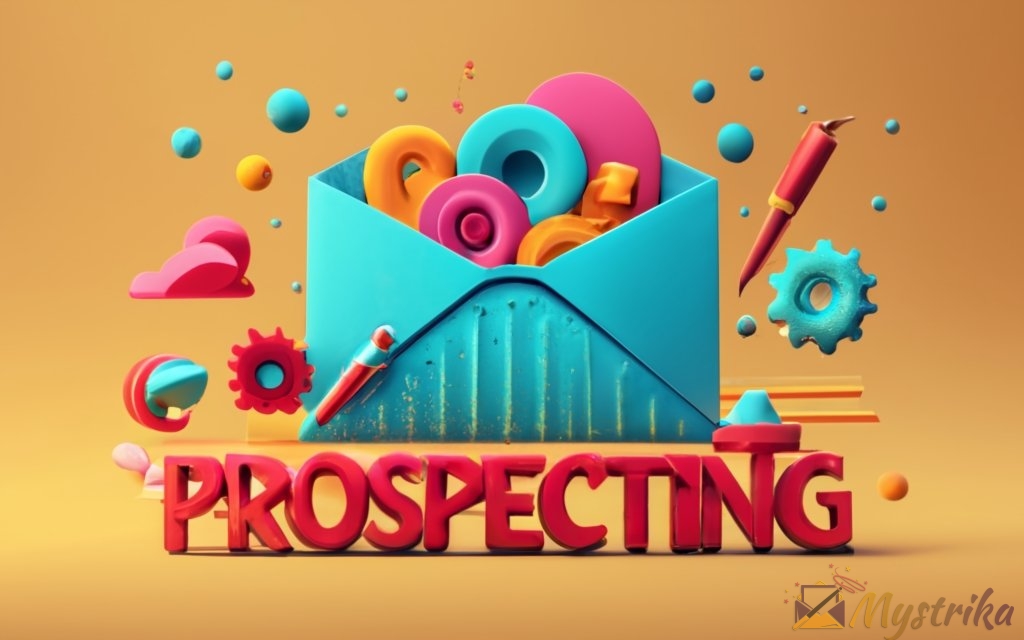
Building a Targeted Prospect List
Armed with an ideal customer profile and insights into prospect pain points, the next step is building a targeted list of accounts and contacts to engage via cold email outreach.
This process breaks down into three key phases:
- Researching and extracting prospect data
- Verifying and qualifying lead records
- Enriching your list for personalization
Approached holistically, list building lays the foundation for your entire cold emailing strategy.
Starting with Quality Prospect Data
Like any building project, your list is only as strong as its raw materials. In the world of cold emailing, that means sourcing accurate and complete prospect data.
Helpful sources to tap include:
- Your CRM – Export existing leads or contacts for outreach
- LinkedIn – Identify prospects by role, company, groups, and triggers
- Clearbit – Leverage powerful company data and discovery tools
- List services – Purchase targeted, verified B2B contact lists
For advanced SaaS sellers, integrating tools like SalesHandy Connect directly into workflows simplifies tapping these sources. Helpful extensions automatically extract verified prospect contacts from LinkedIn, seamlessly adding them to your CRM and email tools.
When extracting data, maintaining proper consent and compliance is critical, especially under privacy laws like GDPR. Never scrape or buy lists without double checking opt-in and lead qualification protocols.
Verifying Email Addresses and Information
With raw prospect data in hand, the next step is verifying its accuracy. Bouncing emails and misdirected outreach create a poor impression with recipients. Not to mention deliverability challenges.
Tools like ZeroBounce and NeverBounce validate the syntax, domain, and mailbox existence of email addresses at scale. These checks remove risky bounces from lists, improving sender reputation.
For fuller verification, tools like Snov.io connect directly to mail servers to confirm valid accounts for each domain. This level of email list verification eliminates risky addresses altogether.
Beyond just emails, also verify linked contact data like names, companies, and titles. Services like Clearbit’s Prospect API attach social and employment information to further validate identities.
Appending verified assets provides assurance you’re engaging the right prospects in the right context.
Prioritizing and Scoring Leads
Unfortunately, time and bandwidth constraints mean you can’t actively work every lead. This necessitates prioritizing and tiering your list to focus on qualified prospects first.
Scoring frameworks help segment contacts for sales-readiness. Typical scoring dimensions include:
- Firmographic – Ranked by company size, sector, tech stack etc.
- Technographic – Grouped by technologies used and level of sophistication
- Engagement – Prioritized by past email/site interactions
- Intent – Qualified by research activity and content downloads
Based on these dimensions, leads receive priority scores used to sequence follow-ups. Sales-ready contacts are engaged immediately while others are nurtured.
MQL scoring models represent another framework to qualify inbound and cold leads, ensuring outreach targets valid prospects.
Expanding Your List with Lookalike Modeling
Despite best efforts, good leads in your niche may slip through the cracks. To address this, solutions like Demandbase apply lookalike modeling to identify “missed” prospects that resemble your customers.
Feeding algorithms firmographic, technographic, and intent data from your ICP allows them to find statistical lookalike matches for outbound prospecting. This expands your list while preserving its integrity.
Enriching Your Data for Personalization
To maximize campaign effectiveness, supplement your core prospect data with enriching details that enable personalization.
Helpful enrichment categories include:
- Social – LinkedIn profiles, Twitter accounts, Facebook pages
- Company – Firmographics, hierarchies, news, intent data
- Tech – Stack insights, product usage, workflows
- Contacts – Updated titles, contact info, backgrounds
This expands your personalization options when crafting emails beyond just names and companies. Tools like Clearbit Enrichment and Lusha automate data enhancement, appending dozens of fields for each lead.
Monitoring Ongoing Triggers and Signals
The final ingredient to list building is tracking real-time triggers and buying signals. Outreach aligned to events prospects are experiencing is remarkably effective.
Helpful triggers to monitor include:
- Role changes – New hires, promotions, departures
- Funding events – Major funding rounds, M&A moves
- Company milestones – Expansions, IPOs, spinoffs
- Technology shifts – New stacks, migrations, projects
- Content engagement – Downloads, forum activity, social mentions
Tools like LinkedIn Sales Navigator and Bombora Intent Data capture these signals for outreach activation. They indicate ideal timing for senders.
In nutshell: Quality Over Quantity
Attempting to blast every email address ever collected is a recipe for low engagement, poor deliverability, and shallow prospect relationships. Framed correctly, list building is a strategic process enabling calibrated, insights-led outreach to Accounts you stand the best chance of winning.
The time invested upfront in crafting an ideal customer profile, verifying data, scoring leads, and enriching contacts pays massive dividends when emails start flowing. So while list building takes work, it’s foundational to cold email success.
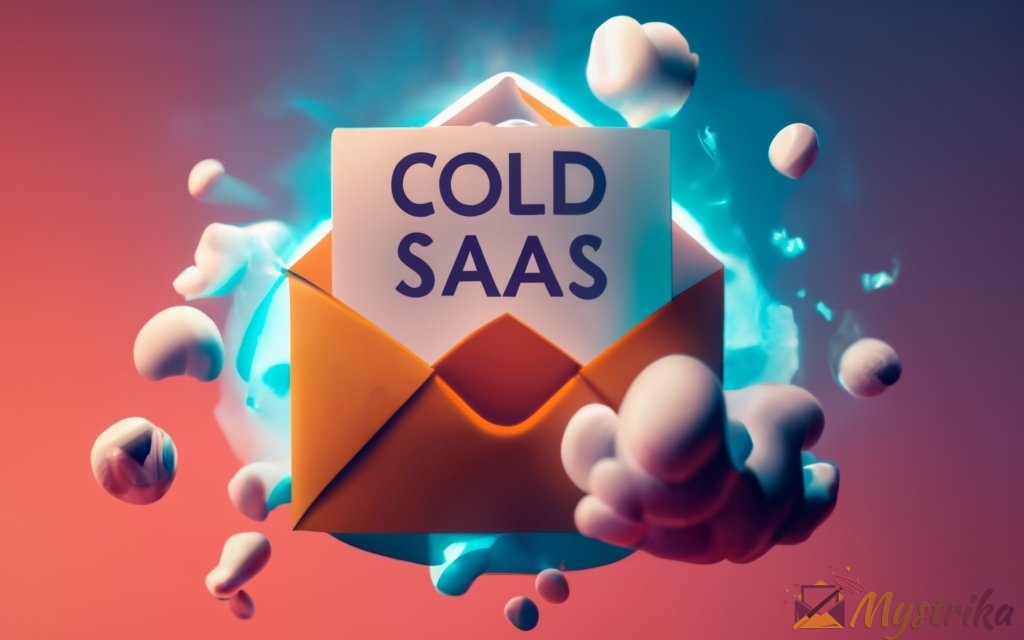
Crafting Effective SaaS Cold Emails
Understanding your audience and assembling a targeted list are important foundations for any cold email program. But outreach success ultimately hinges on crafting emails that spark engagement and drive conversions.
This process entails several interconnected components:
- Optimizing subject lines to open
- Highlighting your value proposition upfront
- Personalizing content for relevance
- Incorporating clear, value-driven CTAs
- Developing persuasive follow-up templates and cadences
Approached holistically, the email copy itself becomes a catalyst for sales pipeline growth.
Hook Recipients with Strategic Subject Lines
Plain and simple – if your email never gets opened, nothing else matters. This makes the subject line the keystone supporting your entire cold email arch.
To maximize open rates, incorporate these proven best practices:
- Personalize – Include first name or company for 22%+ lift
- Speak to pain points – “Tired of data entry?” resonates
- Ask questions – “Have you tried [X]?” drives curiosity
- Use urgency – “Closing tomorrow” compels action
- Keep it short – Under 50 characters works best
Compare “New lead generation strategies” vs. “Hey [First Name], I found a new way for us to generate more leads”. The second is far more likely to get opened and read.
A/B testing different subject lines also reveals what resonates most with your audience. With the power to make or break campaign response rates, subject line optimization is a long-term investment.
Lead with High-Impact Value Propositions
You have seconds to make an impression once a prospect hits open. This makes clearly articulating your value prop upfront in the email body critical.
Every cold email should answer three questions in its opening sentences:
- Who are you? Quickly introduce yourself and your company
- Why are you reaching out? Note any common connections or relevant interests
- What are you offering? Summarize the key pain point addressed or benefit delivered
Leading with these details establishes credibility and context right away while sparking reader interest.
Email copy should emphasize outcomes over features whenever possible. For example:
“Our platform increases sales productivity up to 25% by automatically capturing and logging your calls for transcriptions and analysis.”
This immediately communicates concrete value. Listing features or product details can wait for follow ups once interest is established.
Personalize Content with Mail Merge and Triggers
Even more than subject lines, personalizing the body content substantially lifts engagement rates. But doing so manually across thousands of cold emails is unrealistic.
This is where mail merge using contact data variables comes in. Popular fields to merge include:
- First Name
- Company
- Title
- Location
- Industry
Merge tags populate these fields dynamically for each recipient with a few clicks. But creative marketers go further using trigger events for personalization like:
- Job changes
- Company milestones
- Tech stack shifts
- Website visits
- Content downloads
Trigger-based outreach demonstrates you understand prospects’ situations and priorities. This perceived relevance pays dividends in improved response rates.
Drive Action with Value-Based Calls-to-Action
Without clear direction, even highly engaged prospects stall. Effective calls-to-action (CTAs) provide obvious next steps aligned to value.
Tailor your CTA to recipients’ mindset:
- Cold prospects – Request quick call, content offer, product demo
- Warm prospects – Follow up on prior outreach thread
- Hot prospects – Send proposal, pricing, or contract
Keep CTAs focused on moving prospects to the next phase, notdirect closes. For example:
✅ “Click here to explore our training platform’s features.”
❌ “Click here to upgrade to our Pro plan today.”
Matching CTAs to relationship stage reinforces your customer-first focus through actionable follow up.
Nurture Leads with Personalized Follow-Up Sequences
Studies show it takes 4+ meaningful touches for most cold prospects to convert. This underscores the need to not just send one-off emails, but multi-step sequences.
Here are best practices to follow:
- Limit first sequence to 4-6 emails sent over 2-4 weeks
- Vary content and offers with each follow-up
- Shift angles and framing to beat monotony
- Adapt touch frequency based on engagement signals
- Keep messaging aligned to contact sophistication
- Experiment and iterate continuously
Tools like SalesHandy, Outreach, and LemList support designing automated sequences easily without added work.
As with subject lines, diligently monitor open and reply rates to identify your best follow-ups for replication. Treat each email as a chance to refine and optimize.
In short: Constantly Test and Refine Your Approach
At the end of the day, crafting breakthrough cold emails is a numbers game. Even slight gains across subject lines, value props, personalization, and CTAs can scale up hugely across campaigns in the form of added pipeline and revenue.
Rather than obsess over one-off emails, take a systematic approach to test and iterate different elements continuously. With dedication over time, the compounding impact of small improvements will manifest in the form of explosive lead growth.
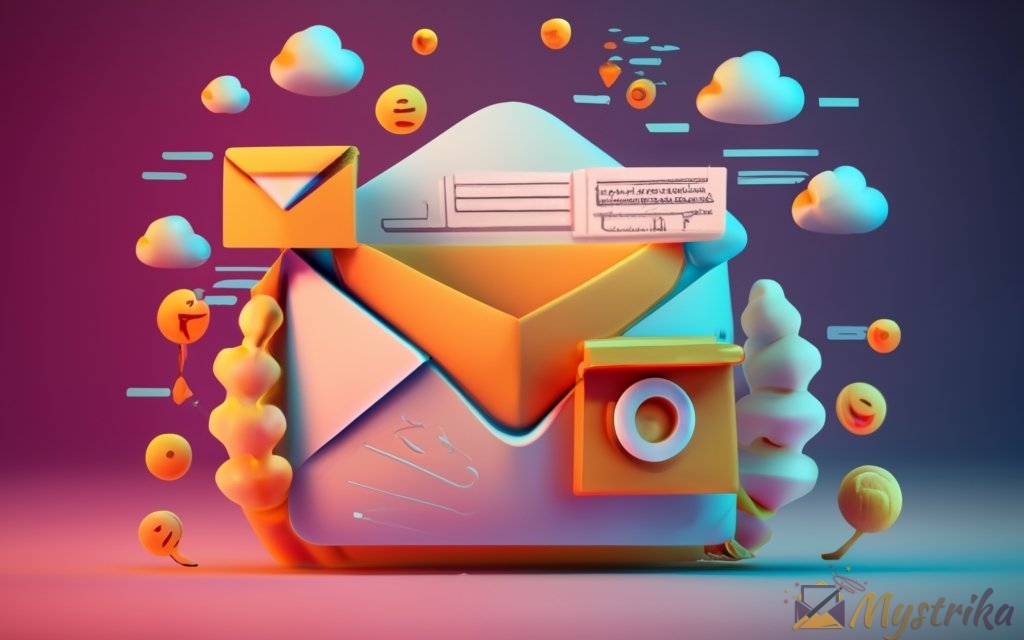
Leveraging Automation and Analytics
For all its potential, cold emailing ultimately flounders without the right systems and data driving execution. This makes integrating automation tools and harnessing performance analytics a must.
Rather than flying blind, technology and metrics-powered sellers enjoy two key advantages:
- Increased efficiency through automated outreach
- Improved optimization from data-backed insights
Used holistically, marketing stacks elevate cold email results while saving time for high-value selling activities.
Automate Manual Tasks with Cold Email Software
Crafting personalized outreach at scale is impossible relying on manual processes alone. This is where purpose-built cold email software comes in to automate repetitive tasks.
Leading solutions like Mailshake, LemList, and Mystrika offer several key capabilities:
- Email sequencing to program multi-step follow-up chains
- Data merging to dynamically personalize each message
- CRM integrations to sync and track customer data
- Email batching to control send volume
- Link tracking to monitor engagement
Advanced platforms even automatically compile target prospect lists and verify contact data accuracy. This eliminates hours spent on manual research and formatting.
Bottom line – cold emailing tools reduce the busywork associated with complex campaigns down to easy drag-and-drop workflows.
Monitor and Improve Performance with Analytics
The difference between 10% and 25% email open rates at scale of tens of thousands of outreach messages is massive in terms of added pipeline.
This example highlights why campaign analytics and reporting are so critical. Key metrics tracked by top tools include:
- Deliverability rate – Avoiding bounces and the spam folder
- Open rates – Measuring email attraction and interest
- Click-through rates – Identifying your best content
- Response rates – Tracking prospect engagement
- Unsubscribe rates – Monitoring opt-outs and spam designations
Monitoring this data allows senders todouble down on tactics working best and promptly course correct elements misfiring. This optimization accelerates performance over time.
For example, seeing a specific follow-up template generates 25% more opens than your average email provides clear direction to replicate that message across the board.
Tap the Power of A/B Testing
Beyond overall monitoring, marketers gain further insights running A/B tests – sending two versions of emails to segments of a prospect list.
Helpful elements to test include:
- Subject line wording
- Different value propositions
- Various CTAs
- Short vs. long copy
- Time of day sent
Tools like Mailshake, Outreach, and Lemlist natively support easy split testing. The winning combinations resulting from A/B experiments then inform your program at large, driving up engagement.
In nutshell: Let Systems Shoulder the Burden
Without marketing automation carrying the load, cold emailing quickly becomes a full-time job. The good news is purpose-built systems shoulder the burden of repetitive tasks, freeing up time for high-value selling.
Combined with the insights unlocked through rigorous analytics, cold emailing tools become force multipliers. Senders gain superpowers allowing them to engage more prospects in less time at the highest effectiveness level possible.
In a software age, not leveraging solutions designed specifically to boost outbound results represents tremendous missed opportunity. Putting in the work to optimize systems for efficiency and data-backed learning is time very well spent.
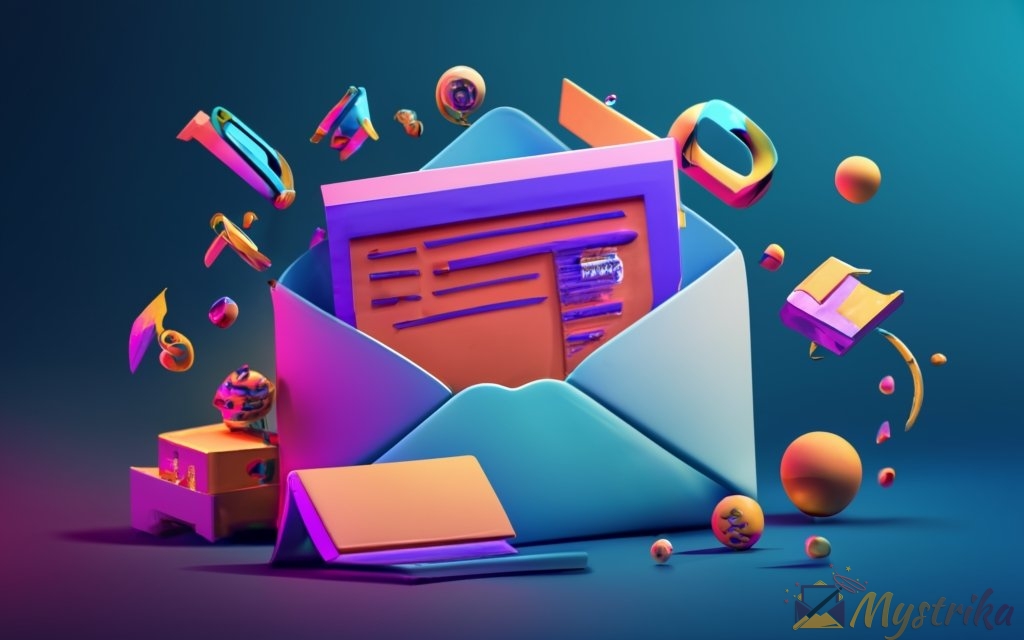
Measuring Results and Improving Over Time
The best sales and marketing teams share one trait – obsession with data and continual optimization. Cold email is no exception to this rule.
To maximize the channel’s impact, businesses must diligently track KPIs, attribute pipeline, and nurture leads across their entire funnel journey.
This allows for:
- Monitoring campaign health at scale
- Optimizing strategies based on evidence
- Expanding cold email’s use throughout the customer lifecycle
Taken together, a metrics-driven approach ensures cold outreach keeps contributing over the months and years ahead rather than becoming a one-off initiative.
Monitor Performance Using Meaningful KPIs
Defining the right key performance indicators (KPIs) is a prerequisite for gauging campaign effectiveness.
Campaign-, contact-, and company-level metrics to track include:
- Deliverability rates – Avoiding bounces to maintain sender reputation
- Open, click, and reply rates – Measuring engagement by customer segment
- Meeting booked rates – Identifying your best messages and follow-ups
- Unsubscribe rates – Monitoring opt-outs and spam compliance
- Sales pipeline influenced – Attributing revenue to cold outreach
SaaS-centric metrics like subscriber growth, average revenue per account, and retention rates also indicate how cold emailing impacts the business financially.
Monitor KPIs continuously rather than one-off. Data should inform daily send volume, messaging, and cadence optimization decisions for maximum agility.
Attribute Pipeline and Revenue to Outreach
Beyond campaign-level metrics, taking a CRM- and account-based approach allows modeling pipeline and revenue directly tied to cold email activities.
This entails tracking metrics like:
- Sales qualified leads – Outreach driving qualification
- Meetings booked – Conversions from email to meetings
- Opportunities created – New deals sparked by outreach
- Deals closed – Direct customer acquisition through cold email
For example, 1,000 cold email sends resulting in 10 SDR meetings and one $5,000 deal closed demonstrates $5,000 in directly attributable pipeline influenced.
Modeling value in this way makes building business cases for added cold email headcount or budget easier. It also highlights what areas need refinement to improve conversion rates.
Continuously Optimize and Evolve Strategies
The most successful cold email programs view every campaign as an opportunity to learn and grow. Monitoring data accelerates this by informing continual optimization across all aspects of outreach.
Common optimization dimensions include:
- Contacts – Refining target personas and ideal customer profiles
- Messaging – Evolving value props and subject lines
- Collateral – Testing different content offers and downloads
- Cadences – Changing follow-up frequency and spacing
- CTAs – Adjusting calls to action to boost response
Small but compounding improvements over time to outreach strategies add up in the form of higher open rates, lower unsubscribes, increased pipeline, and faster deal cycles.
Expand Beyond Lead Gen with Marketing Automation
Most companies focus cold emailing exclusively on net new lead generation. But the channel’s versatility supports expanding usage across the customer lifecycle.
Specifically, marketing automation enables deploying cold email for:
New customer onboarding – Welcome series introducing product capabilities
Cross-sell / upsell – Promoting expanded use and premium plans
Renewals – Winback and retention campaigns to prevent churn
Reactivation – Bringing dormant users back into the fold
Advocacy – Recruiting promoters and referrals
This holistic approach means cold email continually nurtures relationships from first touch to loyal brand advocate.
In short: Data Leads the Way
Paralysis by analysis is certainly a risk if taken too far. But the high performers balance this by letting data – not hunches – guide optimization.
Monitoring meaningful KPIs at scale, attributing pipeline and revenue influence, and tweaking strategies accordingly ensures cold outreach continually improves. This results in greater efficiency, lower acquisition costs, and expanded usage throughout the customer journey over the long-term.
In a sense, running a cold email program mirrors the scientific method. By treating each send as an “experiment” and leveraging insights to advance efforts, teams maximize their odds for outbound success.
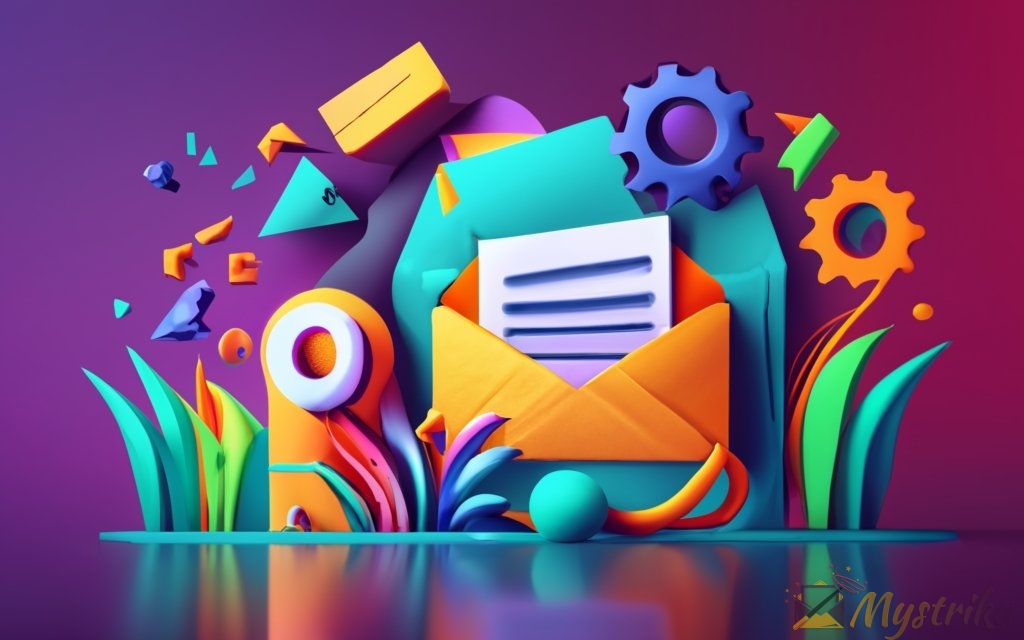
Cold Emailing Best Practices and Compliance
When executed effectively, cold emailing drives explosive revenue growth with minimal investment. However, without diligence, what works today may suddenly stop working tomorrow.
Guarding against deliverability threats and maintaining compliance protects your investment in cold outreach over the long-term. Key areas to focus on include:
- Honoring unsubscribe requests
- Avoiding spam triggers
- Monitoring sender reputation
By incorporating best practices across these dimensions, businesses safeguard their cold email program and results.
Always Honor Unsubscribe Requests
In every cold email campaign, a small percentage of prospects will opt out of communications. Honoring unsubscribe requests quickly is an absolute must.
Beyond being good practice, the CAN-SPAM Act legally mandates:
- Providing a clear opt-out method in every email
- Processing opt-out requests within 10 business days
- Not sending further emails to unsubscribed contacts
Violating these norms can trigger massive fines up to $42,530 per incident. Beyond legal issues, ignoring unsubscribes also hurts sender reputation.
Top cold email platforms like LemList and Mailshake automatically remove opted out contacts from lists. This prevents any mix ups leading to spam complaints.
Senders should also track unsubscribe rates as a KPI. Spikes may indicate deliverability problems or messaging needing refinement. Overall, low unsubscribe rates demonstrate happy subscribers.
Avoid Over-Sending to Prevent Spam Flags
While delivering a high volume of emails is key, senders must be cognizant of mail provider sending limits to avoid spam filtering.
Here are common volume thresholds that may trigger throttling:
- Gmail – 500 emails per day
- Office 365 – 30,000 emails per day
- Outlook – 10,000 emails per day
Monitoring bounce rates and spam complaints also provides visibility into over-sending. Tools like SparkPost and 250ok help model safe send limits and optimize deliverability.
Finally, sender rotation services from providers like Mixmax and MailSlurp allocate volume across IPs to sustain higher aggregate sends without crossing individual thresholds.
Monitor Blacklists to Maintain Reputation
Despite best efforts, some cold email activity may still trigger spam complaints and blacklisting. This severely impacts sender credibility and inbox placement.
Top email verification services like ZeroBounce and NeverBounce monitor major spam blacklists like Spamhaus and Sorbs. Alerting senders of any blocked IPs prevents jeopardizing entire campaigns through blacklisting.
For IPs already flagged, removal services from vendors like ComplySmart expedite de-listing and restoring send privileges. This minimizes business disruption.
As a best practice, continuously check blacklist status and act promptly on any blocking events. An ounce of prevention avoids catastrophic deliverability crises.
In nutshell: Enable Delivery and Avoiding Penalization
The volume required to produce game-changing pipeline growth through cold emailing can – if unmonitored – unfortunately also threaten deliverability and compliance.
Thankfully, technologies and best practices exist to sustain high-impact outreach responsibly. Investing in these prevents self-inflicted disasters that could cripple your cold email program overnight.
Compliance, protecting sender reputation, and avoiding spam triggers simply represent the cost of doing business at scale with cold email. But combining them with personalized messaging and analytics ensures nothing interferes with results.
At the end of the day, successful SaaS leaders don’t view compliance and deliverability as roadblocks, but enablers that allow their strategies to thrive. Adopting this mindset future-proofs returns.

Key Takeaways – Master Cold Emailing for SaaS
For SaaS companies, cold email represents an unparalleled avenue to engage net new prospects at scale and accelerate growth. However, chaotic execution derails many outbound programs.
By taking a more strategic approach informed by audience insights and powered by purpose-built tools, sellers maximize effectiveness over the long-haul.
Key lessons to sustain cold email excellence include:
- Obsessing over target customers – Their pain points dictate what motivates
- Building segmented, qualified prospect lists – Quality over quantity
- Writing resonating emails – Test and refine continuously
- Automating follow-ups – Convert more leads on autopilot
- Tracking analytics rigorously – Optimize using data insights
- Maintaining compliance – Enable deliverability and avoid penalties
Approached holistically, cold email allows SaaS vendors to punch above their weight class and achieve customer acquisition goals more efficiently than competitors relying on older methods.
The businesses realizing this potential don’t view emailing as a tactical channel, but a core growth driver integrated across their entire go-to-market stack.
For ambitious SaaS companies today, the question is less whether to invest in cold emailing, but how to build world-class capabilities that propel their niche dominance. The payoff for getting outbound right is massive.
Frequently Asked Questions
What response rate is good for cold emailing?
For SaaS cold emails, an average response rate of 5-10% is considered successful. Top-performing campaigns often reach over 15%.
How many cold emails should I send per day?
Start low initially, such as 50-100 emails daily. Gradually scale up monitoring deliverability. Stay below mailbox provider limits (e.g. Gmail’s 500 email threshold).
What details should I include in cold emails?
Highlight value proposition first. Personalize with prospect details. Ask questions. Add social proof. Include a clear CTA focused on a next step.
How often should I follow up?
Send your first follow-up 3-5 days after the initial email, and continue following up weekly for 4-6 touches total. Monitor open and reply rates.
What should I avoid in cold emails?
Don’t use spammy language (“Free!”, “Act Now!”), make legal threats, use false headers, purchase lists without opt-in, or ignore unsubscribes.
How do I make prospects open my cold emails?
Use targeted subject lines, preview text, signed-by name matching the company, and avoid spam filters through proper deliverability steps.
Is cold emailing compliant?
Yes, when you honor unsubscribes, identify your company, and comply with CAN-SPAM and GDPR regulations around consent. Do not spam or harvest contacts.
How can I automate parts of cold emailing?
Use segmentation, workflows, AI copywriting assistants, sequences, and CRM integrations to streamline personalization, follow-ups, analytics, and reporting.

